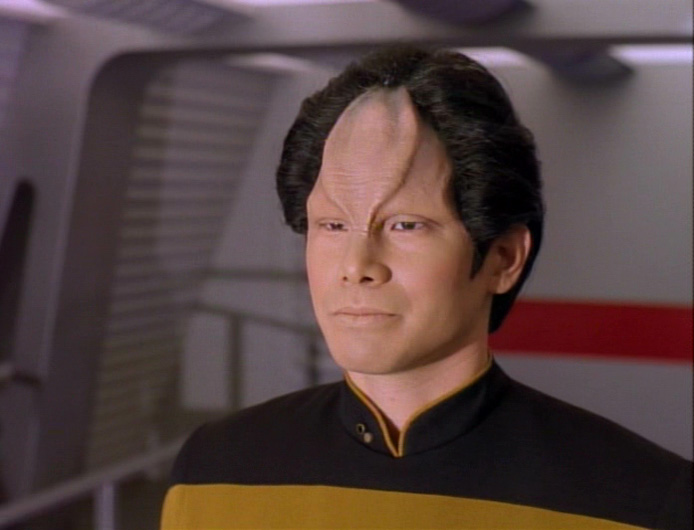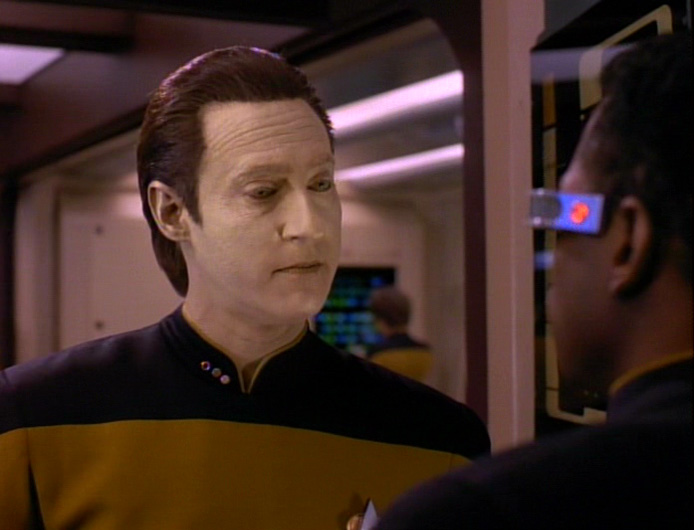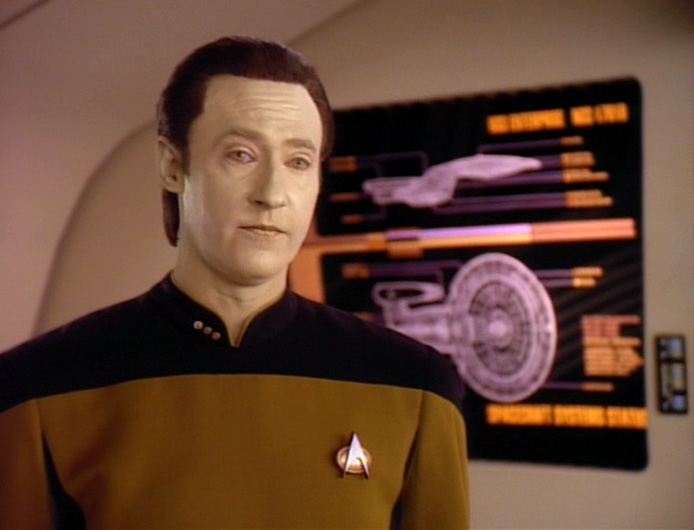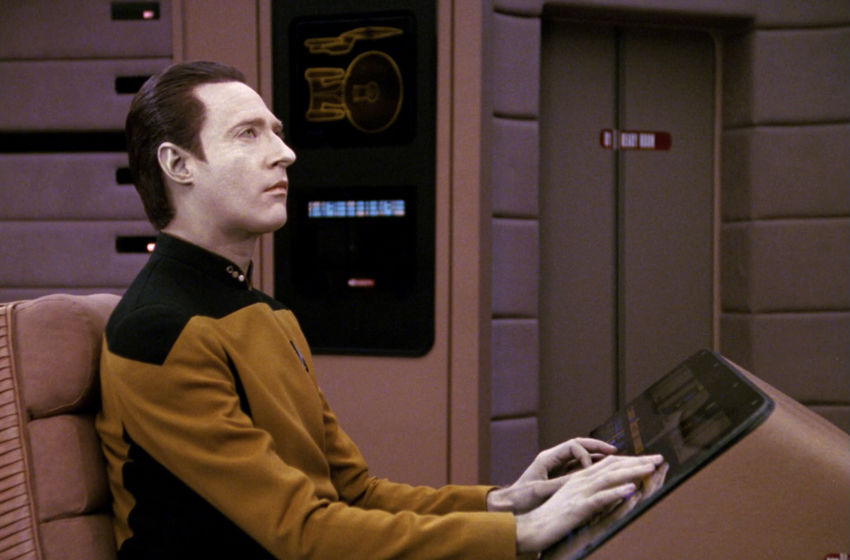In the words of Lieutenant Tasha Yar, Data “see[s] things with the wonder of a child. And that makes [him] more human than any of us.” Perhaps that is why the writers of Star Trek: The Next Generation chose an android to provide the most concise and truthful approach to suicide and mental illness in the episode “Eye of the Beholder.”
The episode opens with the Enterprise on red alert. Lieutenant Worf and Commander Riker are rushing to a warp nacelle tube where they encounter Lieutenant Daniel Kwan standing precariously close to the plasma stream. It becomes clear that Kwan plans to commit suicide, and Riker attempts to talk him down before he ultimately fails and Kwan takes his own life.

As an investigation of Kwan’s death begins and news of the tragedy spreads throughout the ship, Data approaches Geordi with a question. He asks Geordi if the instinct of self-preservation is shared by most life forms. Geordi tells him it is the most basic instinct, to which Data replies, “I find it difficult to understand why someone would deliberately terminate their own existence.”
This exchange opens a dialogue about mental illness the likes of which we don’t experience in Star Trek until the Voyager series. Geordi responds to Data by attempting to explain Kwan’s suicide, rather than address the concepts of suicide and mental illness as a human condition. Whether this is due to Geordi’s desire to shelter Data, who serves as a source of child-like innocence aboard the Enterprise, or is more reflective of the writers’ hesitance to fully delve into these concepts, is unclear.

We could also argue that Geordi’s response to Data is based on his own inability to comprehend the reason for Kwan’s suicide. Geordi tells Data that maybe Kwan felt there was something wrong with his life, something he was “powerless to fix.” This may be a simple deduction of more complex symptoms of depression, e.g. feelings of helplessness; however, it still presents viewers with a representation of suicide that keeps it at a distance: an unknown, mysterious tragedy with no clear cause.
Why, in the 24th century, are we not being provided with a compound, medical explanation for mental illness? How would the dialogue have changed if Data had posed the same questions to Dr. Beverly Crusher? She could’ve told him, “It’s an illness similar to other life-threatening diseases that have since been rendered harmless, except that brain chemicals and thought patterns play large roles in determining a person’s well-being… but, alas, out of all the diseases we’ve cured… even the common cold… depression and anxiety still manage to exist beyond the bounds of our understanding.”

To fully destigmatize suicide and mental illness, the writers of Star Trek should provide more insight into the study and treatment of mental illness beyond our century, present the viewers with scientific evidence instead of solely emotional. In a way, the plot of “Eye of the Beholder” pushes the episode even further from accomplishing this, as the crew discovers the real reason for Kwan’s suicide was the result of an empathic echo. This strips Kwan of all agency in taking his own life and provides a neat and tidy answer to Data’s earlier question; however, in reality this is often not the case. There isn’t always a suicide note or a definite reason why, and it would have been interesting for Star Trek to address that.
While there are some ways in which this episode fails to explore suicide and mental illness wholly, the way that Data attempts to understand Kwan’s suicide does provide a deeper comprehension of mental illness. Data reveals to Geordi that he once contemplated the android equivalent of suicide during the formation of his neural net:
“As I acquired new skills, neural pathways would form replacing other less complex pathways … As my systems grew in complexity, it became increasingly difficult to integrate new pathways into my existing neural net … I came to the conclusion it would be safer, and easier, to shut myself down and start again.”
He also explains to Geordi how he pushed these thoughts aside and decided to keep functioning. Data states, “I chose, instead, to treat the problems I was having with my systems as challenges to overcome rather than obstacles to be avoided.”
Through Data’s dialogue with Geordi, the writers of TNG give a subtle nod to the benefits of therapy as a treatment for mental illness. There are parallels between Data’s description of his neural net and the human brain. Dr. Athena Staik, an author and licensed marriage and family therapist, discusses the way the brain adapts to patterns of thinking in a blog post on PsychCentral. Staik writes, “Once you ‘learn’ a skills set, the processes involved in performing the behavior become integrated.” She explains how this integration can become an issue, as it can cause the brain to adapt to unhealthy patterns, such as phobias, addictions, and compulsions. Staik also writes, “In effect, each time a behavior is repeated, this reinforces (thickens) the pathways that connect the neurons, and by doing so, makes it more likely that the behavior will reoccur (‘fire and wire’) in the future.”
This integration of negative behaviors and patterns make it very difficult for a person struggling with mental illness to break the cycle and reform these brain functions, which is why therapy is a necessary part of treatment for mental illness. “Eye of the Beholder” scratches the surface of this principle by giving Data the platform to describe how he overcame problematic brain patterns during his creation. It is ironic that the most genuine discussion of mental illness and suicide comes through the voice of an android and not a human crewmember. In this way, Star Trek is still challenging us to think seriously about mental illness today, even if the rest of the plot may distract from this powerful message.
